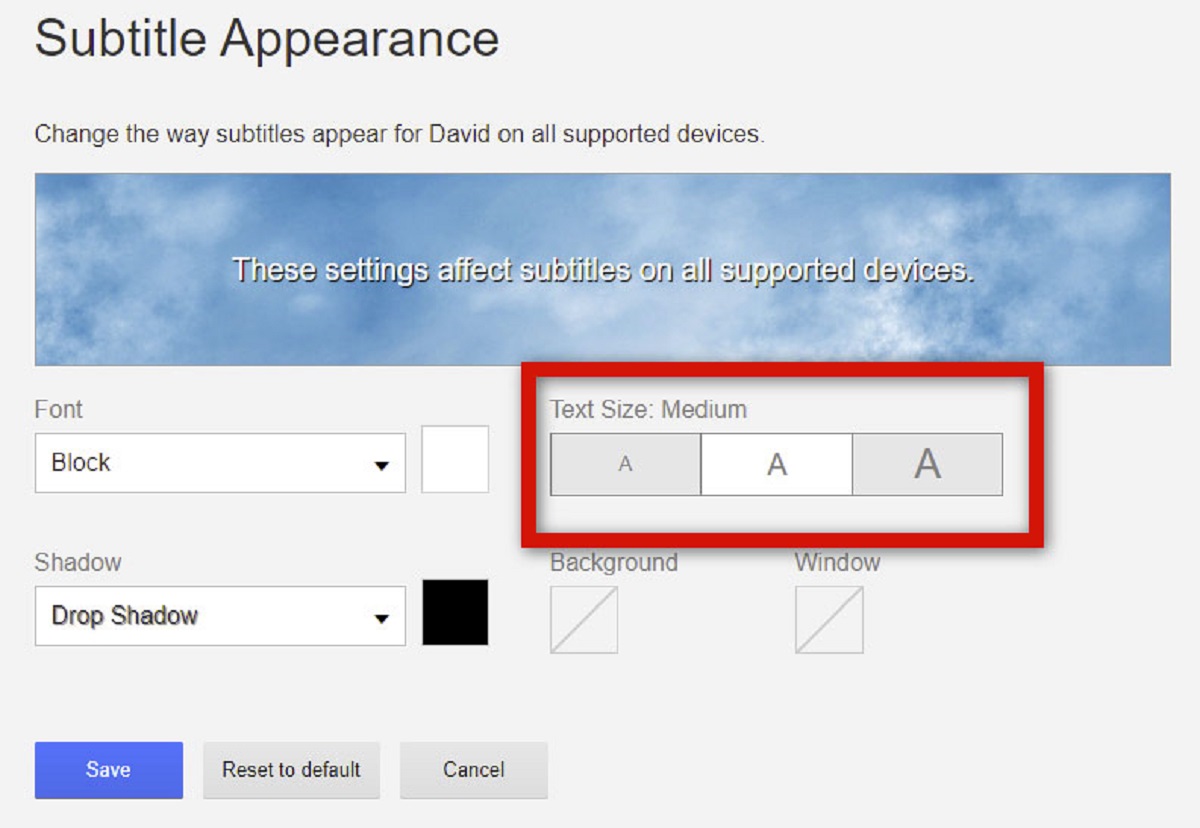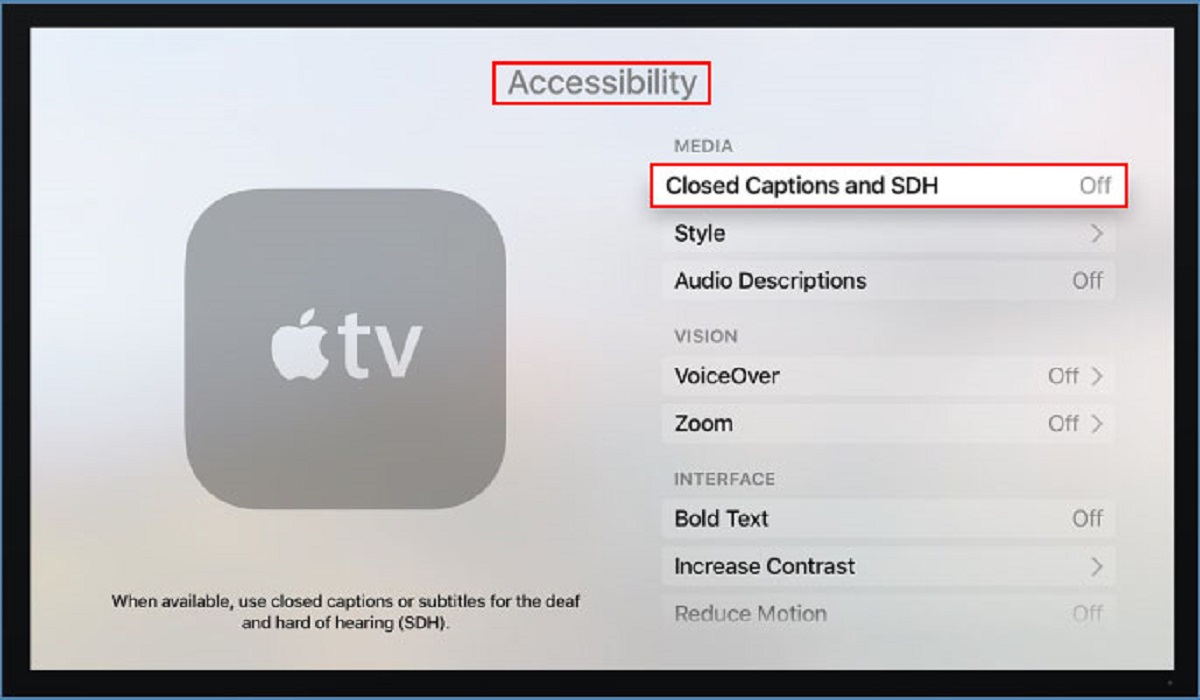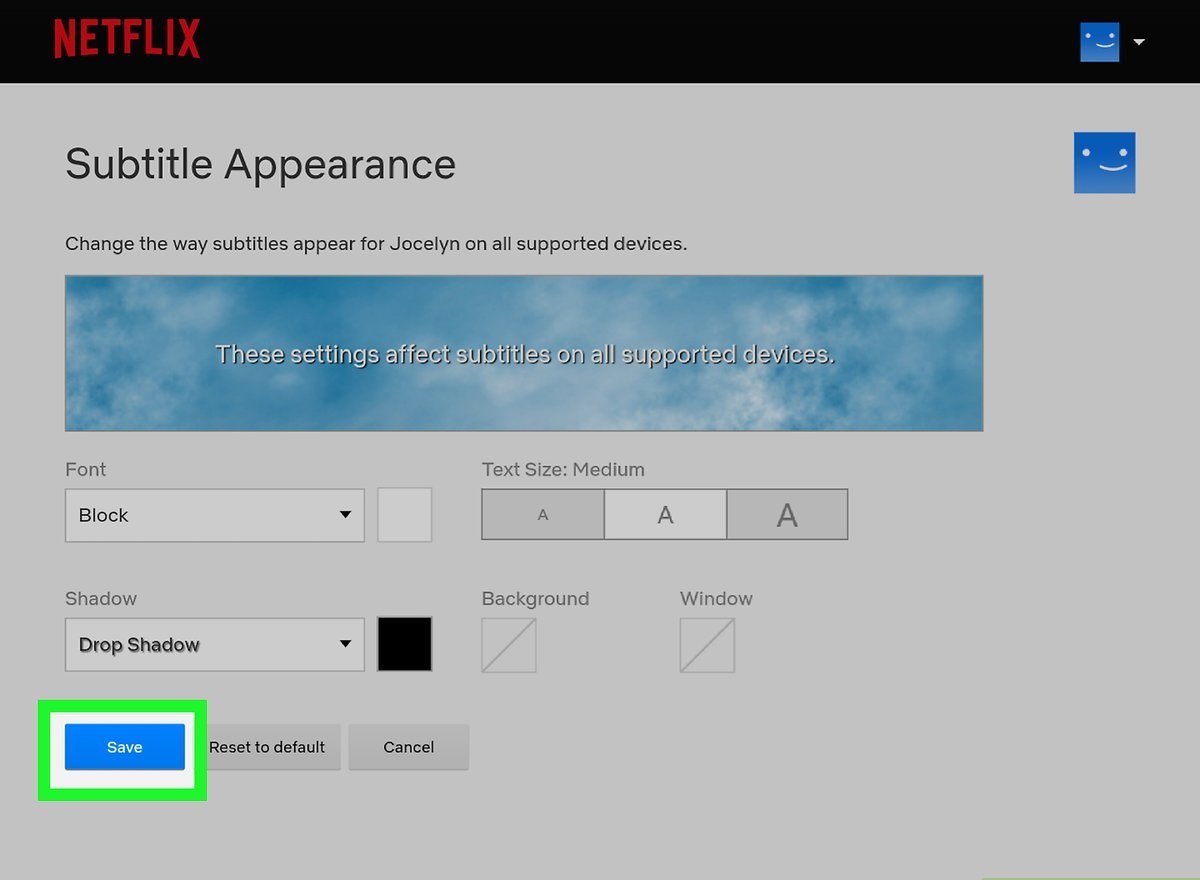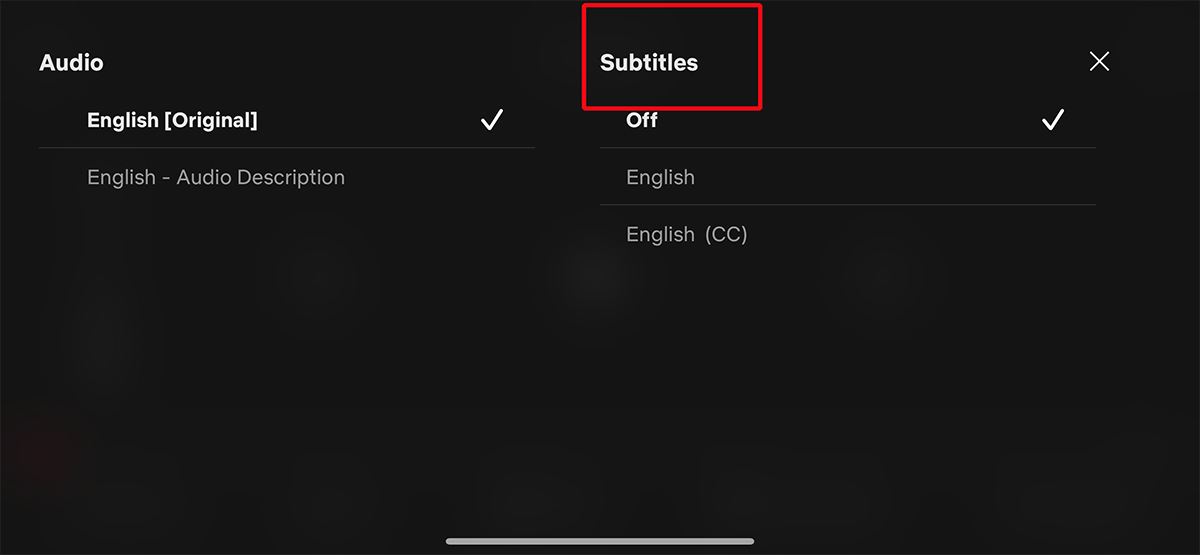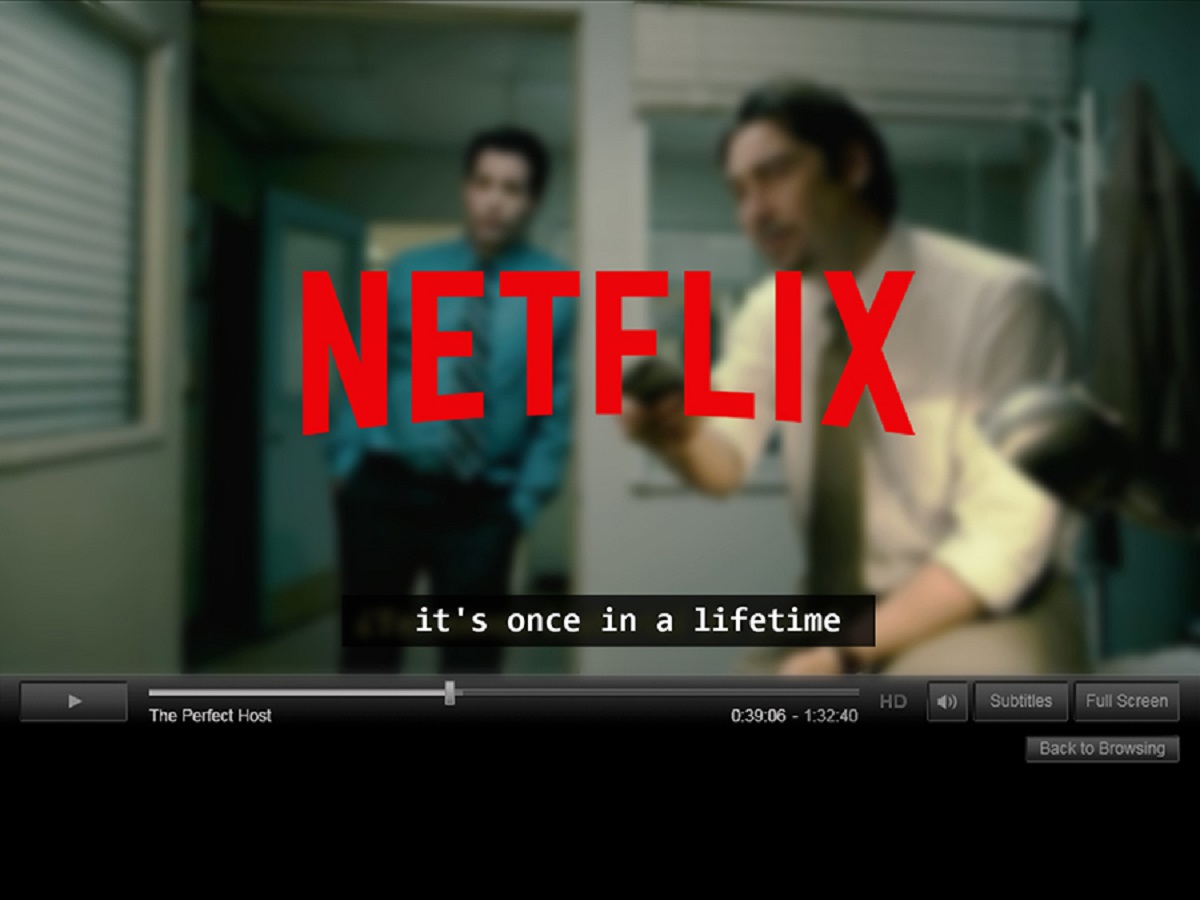Introduction
Netflix has become an integral part of our entertainment landscape, offering a vast array of movies and TV shows to stream at our convenience. However, while the platform continues to gain popularity, some viewers have noticed a persistent issue with its subtitles. These subtitles, which are intended to enhance the viewing experience for non-native speakers or those with hearing impairments, often contain errors that can be both frustrating and misleading.
The importance of subtitles cannot be overstated. They provide essential support for understanding dialogue, ensuring that viewers can fully comprehend the audio content. Subtitles allow non-native speakers to enjoy movies and shows in their own language, while also enabling individuals with hearing impairments to participate in the same entertainment experiences. As such, accuracy and quality are crucial to ensure an inclusive and enjoyable viewing experience.
However, it is not uncommon for Netflix subtitles to contain a range of issues. These issues can include incorrect translations, poor grammar and punctuation, inconsistent capitalization, misspellings, and timing and synchronization problems. While some may consider these errors to be minor inconveniences, they can significantly impact the overall viewer experience and detract from the immersion of the content.
This article will delve into the common problems found in Netflix subtitles, exploring how these errors occur and the impact they have on viewers. By examining these issues, we can gain a better understanding of the challenges faced by non-native speakers and those relying on subtitles, and prompt Netflix to take necessary measures to improve their subtitle offerings. Let us now explore some of the most prevalent issues with Netflix subtitles and their implications.
The Importance of Subtitles
Subtitles serve as a crucial element in enhancing the accessibility and inclusivity of content on platforms like Netflix. They play a vital role in bridging the language barrier, allowing individuals from different linguistic backgrounds to enjoy movies and TV shows in their preferred language. Additionally, subtitles are invaluable to individuals with hearing impairments, providing them with equal access to the audio content.
For non-native speakers, subtitles can make a significant difference in their ability to understand and appreciate a show or movie. By providing a written representation of the dialogue, subtitles help viewers decipher unfamiliar accents, dialects, or colloquialisms. They enhance comprehension, making it easier to follow complex storylines and character interactions. Furthermore, subtitles can aid in learning a new language by enabling viewers to recognize and associate spoken words with their written counterparts, improving vocabulary and pronunciation.
Subtitles also prove beneficial for individuals with hearing impairments, allowing them to fully engage with the audio content. By providing a text-based representation of the dialogue, subtitles ensure that these viewers have access to the same information as their hearing counterparts. This inclusivity is essential in fostering a diverse and equitable entertainment experience for all individuals.
Beyond their practical benefits, subtitles contribute to a more immersive viewing experience. They augment the emotions and atmosphere portrayed in a scene, accentuating the drama, humor, or suspense. Subtitles can also provide additional context, such as captions for sound effects or non-verbal cues, enriching the overall understanding of the content for viewers.
Furthermore, subtitles have the power to improve global cultural understanding. By making foreign-language films and shows accessible to a broader audience through accurate translations, subtitles promote cross-cultural appreciation and empathy. They facilitate the sharing of stories and perspectives from different parts of the world, fostering a sense of interconnectedness and breaking down the barriers of language and culture.
In summary, subtitles are not merely an add-on feature in the streaming experience; they are a vital component that enhances accessibility, inclusivity, and understanding for all viewers. By recognizing their significance and striving for accuracy and quality, streaming platforms like Netflix can ensure that subtitles fulfill their intended purpose of making content accessible to a diverse audience. In the following sections, we will delve into the common issues that plague Netflix subtitles and explore their impact on the viewer experience.
Common Issues with Netflix Subtitles
While Netflix strives to provide an exceptional streaming experience, its subtitles are not exempt from certain prevalent issues. These issues can range from simple grammatical errors to more significant problems that affect the accuracy and coherence of the subtitles. Understanding these common issues is crucial in identifying areas for improvement and ensuring a better viewer experience.
One of the most notable issues with Netflix subtitles is incorrect translations. Subtitles that do not accurately convey the intended meaning of the original dialogue can lead to confusion and misinterpretation. This can occur due to hasty translations or a lack of contextual understanding, resulting in misleading subtitles that significantly deviate from the intended message.
Another common problem is poor grammar and punctuation. Subtitles that contain grammatical errors or lack proper punctuation can be distracting and disrupt the natural flow of the dialogue. Incorrect sentence structure, verb tense, or missing punctuation marks can impact the comprehension and readability of the subtitles, diminishing the overall viewing experience.
Inconsistent capitalization is another issue that frequently plagues Netflix subtitles. Inconsistencies in when to capitalize words can be jarring and affect the professionalism and quality of the subtitles. Whether it’s inconsistently capitalizing proper nouns, names, or titles, this inconsistency detracts from the polished presentation that viewers expect.
Misspellings and typos are yet another common issue encountered in Netflix subtitles. These mistakes can be minor in isolation, but they accumulate and contribute to a lack of attention to detail. Misspelled words not only disrupt the reading flow but also cast doubt on the overall accuracy and reliability of the subtitles.
Timing and synchronization issues are also prevalent in Netflix subtitles. Subtitles that appear on the screen too early or too late in relation to the spoken dialogue can lead to confusion and make it challenging to follow the conversations. These timing discrepancies can be particularly problematic during fast-paced scenes, resulting in viewers struggling to keep up with both the subtitles and the visuals.
Furthermore, a significant issue with Netflix subtitles is a lack of contextual understanding. Subtitles that fail to capture the nuances, idioms, or cultural references in the original language can undermine the intended meaning and impact of the dialogue. This can lead to misinterpretation or loss of important elements that are crucial for fully grasping the intent of the content.
These common issues with Netflix subtitles can greatly impact the viewer experience. They can hinder understanding, cause confusion, and even distort the storyline or character development. In the following sections, we will explore the specific implications of these issues and how they affect viewers’ ability to fully engage with the content.
Incorrect Translations
One of the most significant issues encountered with Netflix subtitles is incorrect translations. Accurate translation is crucial in ensuring that viewers understand the message and intent of the dialogue. However, due to various factors such as time constraints or limited linguistic expertise, errors in translation do occur, leading to a subpar viewing experience.
These translation errors can range from minor inaccuracies to complete misinterpretations of the original dialogue. Simple mistranslations of words or phrases can alter the meaning and context of the dialogue, resulting in confusion for the viewer. In some cases, inaccurate translations can even change the tone or emotional impact of the content, distorting the intended experience.
One common scenario where incorrect translations arise is when idioms, expressions, or cultural references are not adequately conveyed. These linguistic elements are often deeply rooted in the culture and may not have direct equivalents in other languages. When translators fail to capture the essence or cultural context behind these idiomatic expressions, the subtitled dialogue can lose its intended meaning, leading to misunderstandings or missed nuances.
Another challenge in translation is accurately conveying humor. Translating jokes and humorous dialogue requires not only a deep understanding of the language but also an appreciation for cultural and linguistic nuances. Subtitles that fail to capture the comedic timing or punchline of a joke can result in awkward or confusing dialogue that misses the intended humor, diminishing the overall comedic impact.
Additionally, contextual understanding is paramount in ensuring accurate translation. When translators lack familiarity with the broader context of the content, they may struggle to capture the intended meaning or significance behind certain dialogues or references. This can lead to misinterpretation or poorly translated subtitles that fail to convey the intended message.
Inaccurate translations in Netflix subtitles pose a challenge for viewers, especially for non-native speakers who rely on subtitles for comprehension. When the subtitles do not align with the spoken dialogue, it can be disorienting and hinder the viewer’s ability to fully engage with the content. It can lead to confusion, misinterpretation, and frustration.
To ensure a better viewing experience, it is crucial for Netflix to prioritize and invest in accurate and culturally sensitive translations. Working with skilled translators and linguists who have a deep understanding of the source language, its idiomatic expressions, and cultural references can significantly improve the quality of subtitles, allowing viewers to fully embrace the intended meaning and impact of the content.
Poor Grammar and Punctuation
Another common issue plaguing Netflix subtitles is poor grammar and punctuation. Subtitles that contain grammatical errors and lack proper punctuation can disrupt the flow and readability of the text, ultimately impacting the viewer’s understanding and immersion in the content.
Incorrect sentence structure is a prevalent problem in subtitles. Sentences that are grammatically incorrect or poorly constructed can be confusing to read and hinder the viewer’s ability to comprehend the dialogue properly. Whether it’s a subject-verb agreement error, a misplaced modifier, or an incorrect word order, these grammatical mistakes can disrupt the natural flow of the dialogue and create ambiguity.
Poor punctuation can also detract from the quality of subtitles. Missing punctuation marks or inconsistent usage can cause confusion and affect the overall coherency of the text. For example, a missing comma can completely change the meaning of a sentence, leading to a misinterpretation of the dialogue. Similarly, incorrect usage of quotation marks or apostrophes can undermine the professionalism and reliability of the subtitles.
Verb tense inconsistencies are another issue found in Netflix subtitles. Subtitles that improperly use past, present, or future tense within a scene can cause confusion and disrupt the temporal understanding of the events. Viewers may struggle to determine the timeline of the story or the sequence of the dialogues, resulting in a disjointed viewing experience.
Furthermore, the use of colloquial language or dialects in the dialogue can present a challenge when it comes to maintaining proper grammar and punctuation. Translating spoken dialects accurately while adhering to grammatical rules can be complicated, and mistakes can occur. These errors can be jarring for viewers, particularly those who are native speakers of the language being translated.
Poor grammar and punctuation in Netflix subtitles not only undermine the overall professionalism of the content but also disrupt the viewer’s reading flow. Instead of seamlessly following the dialogue, viewers may find themselves grappling with deciphering the intended meaning due to grammatical errors or lack of punctuation. This can lead to frustration and a diminished viewing experience.
To mitigate these issues, Netflix should prioritize working with experienced professionals who possess strong language and grammar skills. Proofreading and quality assurance processes should be implemented to ensure that subtitles meet high linguistic standards and follow grammatical conventions. By maintaining consistent grammar and punctuation, Netflix can enhance the comprehensibility and readability of subtitles, allowing viewers to fully engage with the content without distractions.
Inconsistent Capitalization
An issue frequently observed in Netflix subtitles is inconsistent capitalization. Inconsistencies in when to capitalize words can be distracting and negatively impact the overall reading experience. Achieving consistency in capitalization is crucial for maintaining professionalism and ensuring a polished presentation of the subtitles.
One common capitalization issue in subtitles is the inconsistent capitalization of proper nouns. Proper nouns, such as names of characters, locations, or titles, should generally be capitalized. However, some subtitles may neglect to consistently capitalize these essential elements, leading to confusion for the viewers. Inaccurate capitalization can hinder the viewer’s ability to identify and recognize the characters or important settings within the storyline.
In addition to proper nouns, inconsistent capitalization can also be observed with other types of words within the subtitles. For example, the capitalization of titles or honorifics can be inconsistent, resulting in a lack of uniformity. This inconsistency interrupts the visual flow and professionalism of the subtitles, compromising the overall viewer experience.
Furthermore, the capitalization of acronyms or abbreviations is another area where inconsistency may arise in Netflix subtitles. Acronyms are typically presented in uppercase letters to clearly distinguish them from regular words. However, inaccurate capitalization of acronyms can lead to confusion, as viewers may struggle to differentiate between important abbreviations and regular text.
Inconsistent capitalization not only affects the visual appeal of the subtitles but also raises questions about the attention to detail and quality control in the subtitling process. Viewers may perceive the lack of capitalization consistency as a lack of professionalism, which can impact their overall opinion of the content and the platform.
To address the issue of inconsistent capitalization, it is crucial for Netflix to establish clear guidelines and standards for subtitlers to follow. By providing specific instructions on when and how to capitalize different types of words, including proper nouns, titles, abbreviations, and acronyms, Netflix can ensure a more consistent and polished presentation of subtitles.
Moreover, implementing thorough quality checks and proofreading processes can help identify and rectify inconsistencies in capitalization. These checks should be conducted by qualified professionals who possess a strong grasp of grammar and language conventions to guarantee accurate and consistent capitalization throughout the subtitles.
By prioritizing consistent capitalization in their subtitles, Netflix can enhance the readability, professionalism, and overall viewer experience. Attention to this small yet significant detail can greatly contribute to maintaining audience engagement and satisfaction with the platform’s subtitles.
Misspellings and Typos
Misspellings and typos are common issues that can undermine the quality and credibility of Netflix subtitles. While they may seem like minor errors, their cumulative effect can be significant, leading to a diminished viewing experience for the audience.
Subtitles that contain misspelled words create a sense of unprofessionalism and can be distracting for viewers. When words are spelled incorrectly, it can disrupt the reading flow and require additional mental effort to decipher the intended meaning. Misspelled words can also cause confusion, as viewers may struggle to understand the dialogue or grasp the context of the scene.
Typos, or typographical errors, are another issue observed in Netflix subtitles. These errors occur when a word is mistyped, resulting in incorrect text being displayed on the screen. Typos can introduce inaccuracies and completely change the meaning of the dialogue, leading to misinterpretation and confusion for the viewer. They can also disrupt the immersion and engagement with the content, as viewers may be momentarily taken out of the story by these errors.
Although misspellings and typos can be unintentional mistakes, they can erode the trust and reliability viewers have in the subtitles. Pervasive misspellings and typos may lead viewers to question the overall accuracy of the subtitles, casting doubt on the quality of the translation work and creating a negative perception of the platform’s attention to detail.
To mitigate these issues, it is essential for Netflix to implement thorough quality control measures. This can include proofreading and editing processes carried out by skilled professionals who possess a strong command of the language. Additionally, utilizing spell-check tools and employing automated systems to identify common misspellings and typographical errors can help minimize these issues.
Providing clear guidelines to subtitlers regarding spelling and typos is vital to ensure consistency and accuracy. By emphasizing the importance of double-checking and verifying the text, Netflix can significantly reduce misspellings and typos in their subtitles. Furthermore, fostering an environment of collaboration and feedback between subtitlers and quality control teams can help identify and rectify spelling or typographical errors before the subtitles are made available to viewers.
By prioritizing accuracy and attention to detail in the subtitle production process, Netflix can enhance the overall viewer experience. Minimizing misspellings and typos in subtitles contributes to a more professional presentation and allows viewers to fully immerse themselves in the content without unnecessary distractions.
Timing and Synchronization Issues
Timing and synchronization are critical aspects of subtitle production that greatly influence the viewer’s experience. However, timing and synchronization issues are common problems encountered in Netflix subtitles, and they can significantly impact the overall enjoyment and immersion in the content.
One prevalent timing issue is subtitles that appear on the screen too early or too late in relation to the spoken dialogue. When subtitles are out of sync with the audio, it can lead to confusion and make it difficult for viewers to follow the conversations. This problem becomes particularly prominent during fast-paced or dialogue-heavy scenes, where viewers may struggle to keep up with both the visuals and the subtitles.
Conversely, subtitles that appear on screen for an insufficient duration can also pose a challenge. When subtitles are displayed for too short of a time, viewers may not have enough time to read and process the information fully. This can result in frustration and missed dialogue, as viewers may have to pause or rewind to catch up, interrupting the flow of the viewing experience.
Timing and synchronization issues can also affect the pacing and rhythm of the dialogue. If subtitles are improperly timed, the natural rhythm and cadence of the spoken words may be disrupted. This can disengage viewers and detract from the intended emotional impact of the dialogue, resulting in a less immersive and compelling viewing experience.
In addition to timing, synchronization with visual cues and non-verbal elements is crucial for a comprehensive viewing experience. Subtitles should align with actions, on-screen text, or sound effects to ensure that viewers can fully comprehend the context and nuances of the scenes. When subtitles fail to match these visual or audio cues, it can lead to confusion or a lack of contextual understanding.
To address these timing and synchronization issues, it is essential for Netflix to establish robust quality control processes and invest in technologies that assist in accurate timing and synchronization of subtitles. Collaboration between translators, subtitlers, and technical teams is crucial to ensure that subtitles align seamlessly with the audio and visual elements of the content.
By striving for precise timing and synchronization, Netflix can enhance the overall viewing experience for viewers, allowing them to fully engage with the content without distractions or confusion. Well-timed and synchronized subtitles contribute to a seamless and immersive experience, enabling viewers to effortlessly follow the dialogue and appreciate the subtleties of the storytelling.
Lack of Contextual Understanding
Another common issue encountered in Netflix subtitles is a lack of contextual understanding. Subtitles that fail to capture the nuances, idioms, or cultural references in the original language can significantly impact the viewer’s comprehension and overall appreciation of the content.
Understanding the broader context of the dialogue is crucial for accurate translation and subtitling. However, without a deep understanding of the cultural and linguistic intricacies embedded within the dialogue, translators may struggle to convey the intended meaning effectively. This can lead to subtitles that miss essential nuances, resulting in a loss of important information or misinterpretation of the dialogue.
Idioms, expressions, and wordplay pose particular challenges when it comes to contextual understanding. These linguistic elements are often highly culture-specific, and direct translation may not capture their intended meaning. When subtitled dialogue fails to convey the cultural connotations or humor behind these idiomatic expressions, viewers may miss out on the full depth and richness of the dialogue.
Cultural references can also be misunderstood or overlooked in subtitles. When a reference to a specific event, person, or cultural phenomenon is not adequately conveyed, the impact and relevance of the dialogue can be lost. Inaccurate rendering of cultural references can lead to confusion for viewers who may not be familiar with the source culture, limiting their ability to fully appreciate and connect with the content.
Furthermore, the subtitler’s lack of familiarity with specific subject matters or specialized terminology can result in errors or oversimplifications. Technical jargon or complex concepts often require niche expertise to accurately translate. When subtitles lack the necessary depth of understanding, the viewer may be left with a superficial interpretation that does not capture the intended meaning or significance of the dialogue.
Addressing the issue of a lack of contextual understanding requires collaboration between translators, subject matter experts, and linguistic consultants. By creating a communication channel to clarify cultural and contextual nuances, Netflix can ensure that subtitles accurately reflect the intended meaning of the dialogue.
It is also important for Netflix to invest in professional development and training for subtitlers, providing them with tools and resources to enhance their linguistic and cultural competencies. By fostering a deeper understanding and appreciation of different cultures, subtitlers can produce subtitles that better encapsulate the context and convey the intended message of the content.
By striving for a greater contextual understanding in their subtitles, Netflix can enhance the viewer’s ability to fully comprehend and engage with the content. Accurate and culturally sensitive subtitles contribute to a more authentic and immersive viewing experience, bridging language barriers and fostering cross-cultural understanding.
The Impact on Viewer Experience
The issues with Netflix subtitles, including incorrect translations, poor grammar, inconsistent capitalization, misspellings, timing issues, and a lack of contextual understanding, collectively impact the viewer experience in various ways. These problems can detract from the intended immersion, comprehension, and enjoyment of the content, leading to frustration and a diminished overall viewing experience.
When subtitles contain inaccurate translations, the viewer’s ability to understand the dialogue and grasp the original intent of the content is compromised. Misleading or incorrect translations can confuse viewers, potentially altering the storyline, character dynamics, or emotional impact of the dialogue. This can result in a disjointed viewing experience and a disconnection from the intended narrative.
In addition, poor grammar, punctuation, and inconsistent capitalization disrupt the readability and professionalism of the subtitles. Subtitles that contain grammatical errors or lack proper punctuation can hinder the viewer’s comprehension, requiring additional mental effort to decipher the intended meaning. Inconsistent capitalization can also be distracting, affecting the overall visual appeal and reliability of the subtitles.
Misspellings and typos further diminish the viewer experience by introducing unnecessary distractions. These errors disrupt the reading flow and cast doubt on the overall accuracy and attention to detail in the subtitles. Instead of being fully engaged in the storyline, viewers may find themselves fixated on these mistakes or feeling disconnected from the content.
Timing and synchronization issues can also have a detrimental effect on the viewer’s ability to follow the dialogue and fully engage in the content. Subtitles that are out of sync or appear for an insufficient duration disrupt the natural flow and timing of the scenes, causing confusion and making it difficult to keep up with both the visuals and the subtitles. This can lead to frustration and a fragmented viewing experience.
Moreover, a lack of contextual understanding in subtitles can limit viewers’ comprehension of culturally specific references, idioms, and nuances in the dialogue. When crucial cultural or linguistic elements are lost in translation, the viewer’s ability to fully appreciate and connect with the content is diminished. This can result in a superficial understanding or misinterpretation of the dialogue, stripping away the intended depth and richness of the storytelling.
Overall, the combined impact of these issues on the viewer experience is profound. Inaccurate translations, poor grammar, inconsistent capitalization, misspellings, timing issues, and a lack of contextual understanding all contribute to a less immersive, less engaging, and less satisfying viewing experience. To enhance viewer satisfaction and immersion, it is crucial for Netflix to invest in improving the quality of subtitles, addressing these issues, and ensuring consistently accurate, professional, and contextually sensitive subtitles for their diverse audience.
Conclusion
The issues with Netflix subtitles, including incorrect translations, poor grammar and punctuation, inconsistent capitalization, misspellings, timing and synchronization issues, and a lack of contextual understanding, have a significant impact on the viewer experience. These issues can hinder comprehension, disrupt the flow of dialogue, create confusion, and ultimately diminish the immersion and enjoyment of the content.
To address these issues, it is crucial for Netflix to prioritize the quality and accuracy of subtitles. This entails investing in skilled translators and subtitlers who possess a deep understanding of both the source and target languages, as well as the cultural nuances embedded in the dialogue. Thorough quality control processes, including proofreading and editing, should be implemented to ensure that subtitles meet high linguistic standards.
Furthermore, consistent capitalization, proper grammar and punctuation, and the elimination of misspellings and typos are vital for maintaining professionalism and readability in subtitles. Attention to detail in timing and synchronization will enhance the viewer’s ability to follow the dialogue seamlessly and engage fully with the visuals.
Contextual understanding is also crucial in providing accurate and culturally sensitive subtitles. Collaborative efforts between subtitlers, translators, and subject matter experts can ensure that idioms, cultural references, and specialized terminology are properly conveyed, allowing viewers to fully appreciate the intended meaning and depth of the dialogue.
By addressing these issues, Netflix can significantly enhance the viewer experience and ensure that subtitles fulfill their intended purpose of making content accessible and inclusive. Accurate and high-quality subtitles not only benefit non-native speakers and individuals with hearing impairments but also enrich the overall viewing experience for all viewers.
As Netflix continues to expand its global reach and strive for excellence in streaming services, it is essential to recognize the vital role subtitles play in facilitating understanding, cultural exchange, and global appreciation. By committing to improve the accuracy and quality of subtitles, Netflix can provide a more impactful and enjoyable viewing experience for its diverse audience.










